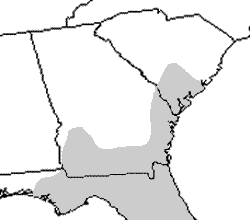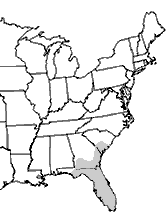Dwarf Siren (Pseudobranchus striatus)
Northern Dwarf Siren (Pseudobranchus striatus)



Description: The dwarf siren is the smallest of the three sirens found in the Southeast, reaching only 4–6 in (10–15 cm) in length. It has external gills, three toes on each front limb, and no hind limbs. Its head is small and triangular, the tail laterally compressed, and the body slender. Five subspecies occur across its range, differing in distribution and coloration, though most show faint stripes along the sides.
Range & Habitat: This species occurs throughout Florida and the Coastal Plain of southern Georgia and South Carolina. It inhabits shallow, weedy waters of ponds, swamps, and ditches, and is often associated with water hyacinth. Its close link to this invasive plant may be facilitating a northward range expansion.
Habits: Entirely aquatic, the dwarf siren is sluggish and nocturnal, feeding on small invertebrates among aquatic vegetation and plant debris. Reproduction is poorly understood, though eggs are laid singly in spring, attached to vegetation, and hatch in about one month; fertilization is believed to be external. During drought, dwarf sirens can burrow into mud and form a protective cocoon of mucus and shed skin.
Conservation Status: In South Carolina, the dwarf siren is listed as a species of special concern. In Georgia and under federal law, it is considered non-threatened.
